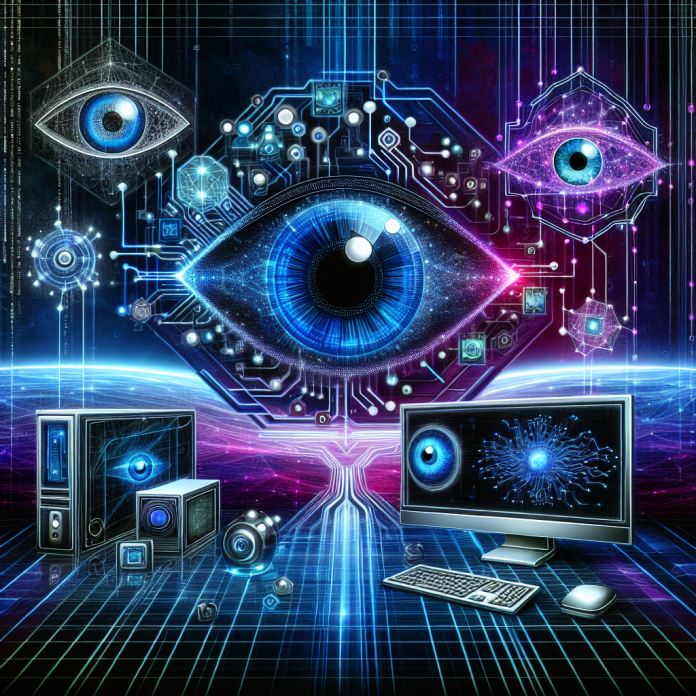# The Vision of Computer Vision: A Closer Look at the Future of AI
Have you ever thought about how our devices are able to recognize faces in photos, read handwritten text, or even detect objects in videos? This is all thanks to the marvels of computer vision, a field of artificial intelligence that is rapidly shaping the way we interact with technology.
## What is Computer Vision?
Computer vision is a branch of AI that enables computers to interpret and understand the visual world. By mimicking the human vision system, machines can analyze and process images or videos, extract valuable information, and make decisions based on visual data. This technology has endless applications across various industries, from autonomous vehicles to healthcare, retail, and security.
## The Evolution of Computer Vision
The idea of computer vision dates back to the 1960s when researchers developed algorithms to perform simple tasks like recognizing basic shapes. Over the decades, advancements in machine learning and deep learning have revolutionized the field, allowing computers to achieve human-like accuracy in image recognition, object detection, and even facial recognition.
One of the most significant breakthroughs in computer vision was the development of Convolutional Neural Networks (CNNs). These complex neural networks are inspired by the architecture of the human brain and have become the backbone of many computer vision applications. CNNs can automatically learn patterns and features from images, allowing machines to recognize objects with high precision.
## Applications of Computer Vision
### Autonomous Vehicles
The rise of autonomous vehicles would not be possible without computer vision. Cars equipped with cameras and sensors use computer vision algorithms to detect lane markings, recognize traffic signs, and identify pedestrians and other vehicles on the road. This technology plays a crucial role in ensuring the safety and efficiency of self-driving cars.
### Healthcare
In the healthcare industry, computer vision is being used to assist doctors in diagnosing diseases, analyzing medical images, and tracking patient progress. For example, computer vision algorithms can detect early signs of diabetic retinopathy by analyzing retinal images, leading to early intervention and improved patient outcomes.
### Retail
Retailers are leveraging computer vision technology to enhance the shopping experience for customers. By implementing smart shelves equipped with cameras, stores can automatically track inventory levels, analyze customer behavior, and even offer personalized product recommendations based on visual data.
### Security
Surveillance systems rely heavily on computer vision to monitor and analyze video feeds in real-time. By detecting suspicious activities, identifying individuals, and tracking objects, security cameras powered by computer vision algorithms help law enforcement agencies prevent crimes and ensure public safety.
## Challenges and Limitations
Despite its impressive capabilities, computer vision still faces several challenges that hinder its widespread adoption. One of the primary concerns is the ethical implications of using facial recognition technology, as it raises privacy and security issues. Additionally, training deep learning models for computer vision requires vast amounts of labeled data, which can be time-consuming and expensive.
Another limitation of computer vision is its vulnerability to adversarial attacks, where malicious inputs can deceive the algorithms and generate incorrect results. Researchers are constantly working on developing robust and reliable techniques to enhance the robustness of computer vision systems and improve their performance in various scenarios.
## The Future of Computer Vision
The future of computer vision looks promising, with new advancements and innovations on the horizon. Researchers are exploring novel approaches such as unsupervised learning, reinforcement learning, and generative adversarial networks to enhance the capabilities of computer vision systems.
One exciting development in computer vision is the integration of 3D perception, which allows machines to understand the depth and spatial layout of objects in the environment. This technology has profound implications for augmented reality, virtual reality, and robotics, enabling more immersive and interactive experiences for users.
As computer vision continues to evolve, we can expect to see more sophisticated applications in areas like healthcare diagnostics, environmental monitoring, and industrial automation. With the growing demand for intelligent machines that can perceive and interpret the visual world, computer vision is poised to play a central role in driving the next wave of AI innovation.
In conclusion, computer vision has come a long way since its inception and has the potential to revolutionize how we interact with technology in the future. By harnessing the power of AI and machine learning, we can unlock new possibilities and create smarter, more efficient systems that benefit society as a whole. So, the next time you snap a photo or watch a video, remember the incredible technology behind it all – the vision of computer vision.

